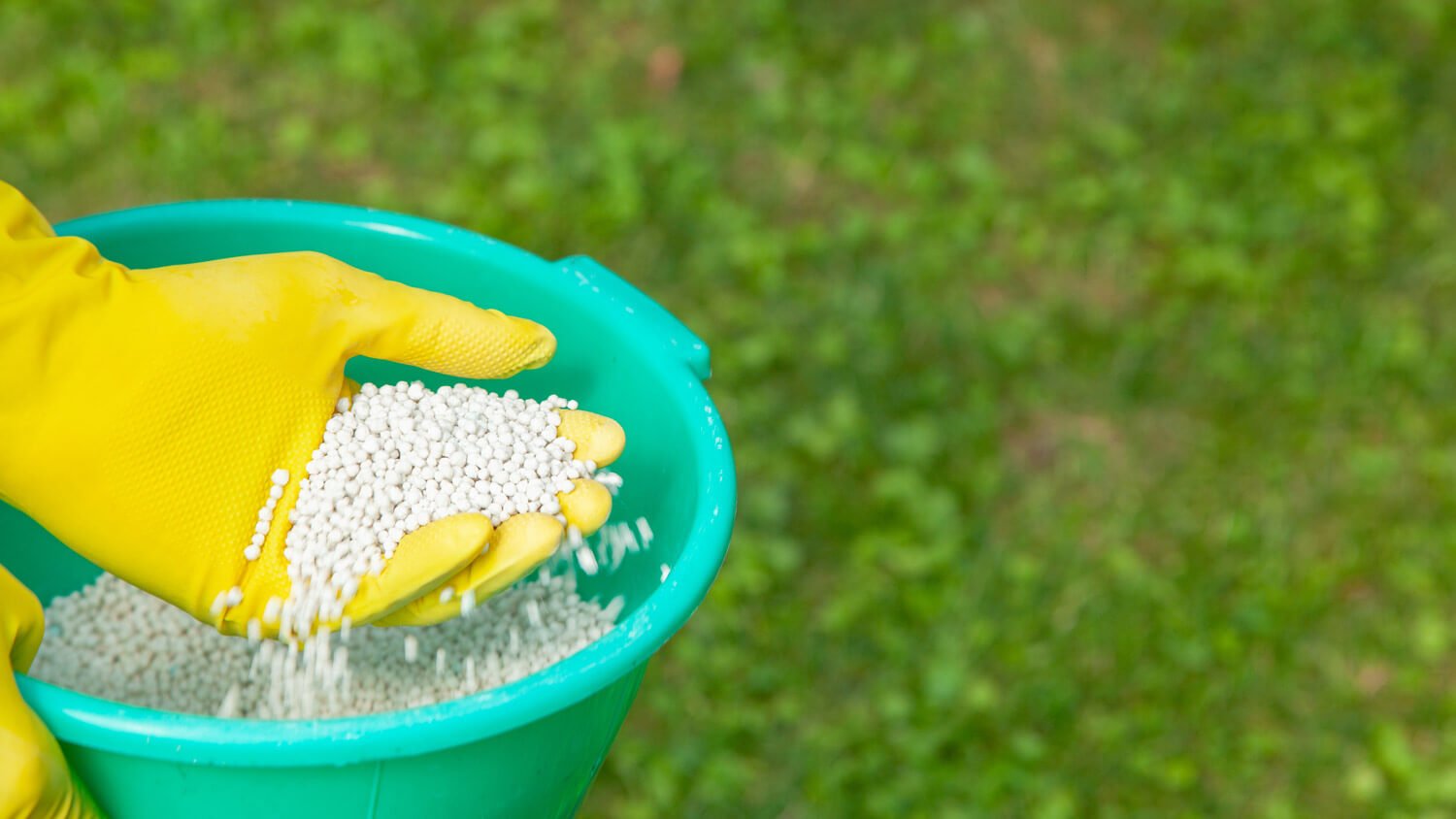
A landscape designer can elevate your outdoor space and bring your vision to life. Use this landscape design cost guide to budget for your next project.
Make sure your yard is ready before Jack Frost comes nipping


You’ve already put your summer clothes away in preparation for the cooler months ahead. But before the temperature dips too low, you need to start preparing your lawn for winter too. Follow these 10 winter lawn prep tips, and you’ll have a beautiful garden waiting for you in the spring.
Avoid soil compaction from heavy snow by aerating your lawn. Using a hand-held aeration tool, pierce holes in the turf to allow water and nutrients to distribute deeper into the soil. You can rent or buy a rolling aeration tool to cover more ground if you have an extensive area to cover, or you can hire a landscaper near you to cover the aeration as a part of your fall clean up.

Cool-season grasses such as Kentucky bluegrass, perennial ryegrass, fine fescue, and tall fescue benefit from a fall feeding, typically in September or October in most climates. If you haven’t already done so and temperatures haven’t dipped below freezing, you can still fertilize your lawn now—just don’t wait too long.
If you have warm-season grasses, which are more common in Southern climates, you should only fertilize in the spring. These grasses include Bermuda grass, centipede grass, Bahia grass, and zoysia grass.
Fertilizing as part of your fall lawn care is a great way to ensure healthy lawn growth that will pay dividends in the spring.
Be sure to trim and fertilize your plants with a specialty winter fertilizer before the temperature hits freezing. Since grass and plants go dormant in the cooler months, this will make sure they return stronger in the springtime.

Make sure you carry out a fall cleaning to remove leaves, sticks, and any other tree debris that might be lying around. These all add weight to the soil, which can lead to compaction under snow—they can hold too much moisture in the ground, potentially leading to root rot and mold growth. If you want to maintain the nutrients fallen leaves naturally add to your soil, go over them with a mulcher to allow for better airflow.
If you have routine landscaping services for your property, you can ask your professional to tackle your fall clean up for you. Leaf removal costs around $376, but you might get a lower price if you use the same landscaper who carries out maintenance through the spring and summer.
It might be tempting to wait until the spring to pull those weeds out, but it’s a good idea to do it in the fall to stay ahead of the curve. You’ll save time for more important spring-time yard maintenance, and you’ll reduce the likelihood of those weeds spreading when warmer weather comes.
It might seem counterintuitive after raking the leaves up, but spreading a light layer of loose leaf debris out on your lawn is an easy and affordable way to add some nutrients to your soil. Using mulched leaves will still allow oxygen to get into the ground to promote grass health without weighing down your lawn and compacting the soil.
While you’re at it, spread 1 to 4 inches of mulched leaves over your garden beds. Doing so will help keep the garden beds warmer for cold-sensitive plants, and it’s an affordable way to get some extra nutrients for optimal plant growth. If you already have mulch in your garden beds, check the depth and add mulched leaves as needed. If you see signs of mold or fungal growth, remove the old mulch before laying down a new layer.
If you have cool-season grass, overseeding in the fall is a great way to fill in any patchiness and repair damage your yard might have sustained in the summer heat and oppressive sunlight. Spread seed according to the directions on your bags of seed—use a spreader or just hand seed for targeted growth. Seeding your yard in the fall gives the grass ample time for slow, steady root growth to prime your yard for success in the following spring.
If you’re taking our earlier tip of aerating in the fall, spread the seeds right after you aerate and apply a light mulch to ensure the seeds have enough air and nutrients to thrive.
Get out your gardening shears and trim back dead, damaged, or diseased branches on shrubs and trees. Doing this in the fall means your plants will benefit from targeted growth in the spring, and you’ll avoid further damage by trimming in cool weather when the shrubs and trees aren’t stressed from the sunlight and heat. Careful trimming will also help avoid disease and pest infestation once the warmer weather hits.
If you live where snowmelt in the spring causes “snow mold” or other fungi to grow on your lawn, treat the grass now with a lawn fungicide. This is an important step in preparing your lawn for winter to keep it healthy for the warmer months.
Next, prepare your landscaping features, trees, and shrubs for the colder weather. Start by winterizing any water features like ponds, which can include a good cleaning, water treatment to avoid harmful bacteria if you have koi or other fish, removing and storing the pump, and blowing water out of plumbing lines. You can also set up a floating de-icer to maintain airflow to and from the water.
You can also use burlap to wrap small shrubs and tree wrap around the trunks of small trees to protect them from the cold, snow, and de-icing salt. It’s a good idea to place markers around smaller shrubs and bushes so that you don’t accidentally hit them with snow shovels or snow blowers during snow removal.
If you have any tubers growing in your garden, like dahlias, carefully remove them after the first frost and split them if you plan on planting multiples in the spring. Store them in a chilled environment above freezing—usually around 50 degrees F—in a medium like vermiculite or wood shavings with a small amount of moisture to prevent rot and promote plant health.
If you’re planting bulb plants, like tulips or hyacinths, aim to plant them in mid-to-late fall. This will give them ample time to get established for successful spring blooms.
If this list is looking long and the days are already short, consider hiring a local landscaping company to come help you get your yard and garden ready for the chilly months. These pros have the skills, experience, and tools needed to get the job done while you can enjoy the relaxing sweater weather. Professionals can also carry out soil tests and make specific recommendations based on your local climate to ensure the best results possible when the temperatures start to rise.
From average costs to expert advice, get all the answers you need to get your job done.

A landscape designer can elevate your outdoor space and bring your vision to life. Use this landscape design cost guide to budget for your next project.

Landscape curbing can really improve the look of a yard, but at what cost? Find out how much it costs and the different ways you can do it

Ivy might look pretty, but you probably don’t want it in your garden. Learn how much it’ll cost to remove ivy by type, treatment method, and more.

It’s natural to judge, but which home aspects get the most criticism? From lawn care to messiness, find out what homeowners really judge the most.

Erosion can affect anyone who lives on a hillside, but it’s a particular problem for waterfront property owners. Stop erosion in your yard with these tips.

Preparing your pond for the winter can keep it healthy until springtime. Learn how to winterize a pond with this how-to guide.